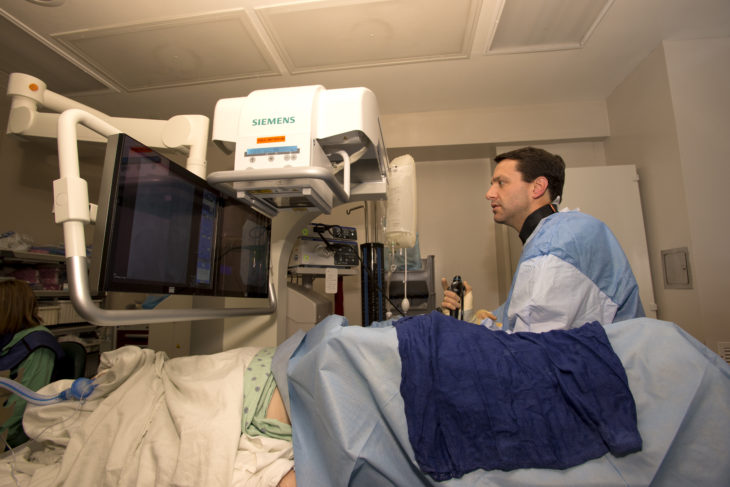We focused on the most common reasons for retreatment and found new ways to address them.
By Michael Maddox, MD
Ideally, we would like to treat a condition once and allow our patients to return to normal, healthy activities. In my field, patients sometimes require repeat treatment for kidney stones. A second treatment means a second round of anesthesia, pain, risk, and lost time at work. There are financial costs for the patient and hospital alike, and it affects the hospital’s readmission metrics.
Because kidney stones can be a recurring problem, I think they offer a good model for us in finding ways to reduce readmissions after minimally invasive surgery. Certainly, patients who have had kidney stones face a much higher risk for future stones than the general public. Diet, medical management, and advanced endoscopic treatments for stones can help minimize retreatment and readmissions.
Why Are Patients Retreated?
Patients are retreated for kidney stones because new stones have formed or because some fragments were left behind. For patients who have a tendency to form new stones, diet and medical management are beneficial. For all patients, we need to thoroughly remove residual fragments. Residual stones can grow, or a fragment that seemed insignificant can end up causing pain. As a result, if we don’t clear the fragments completely, there is a good chance that the patient will have an event leading to an emergency room visit, followed by a potential repeat surgery.
How Can We Get It Right the First Time?
To avoid retreatment for kidney stones, we need to be very aggressive about removing every trace. Perceptions of a “clinically significant fragment” differ, but generally speaking, smaller is better.
To ensure that I fragment and remove stones completely, I quickly debulk stones with a technique called stone dusting, which reduces stones to dust-like particles that pass with urine and do not lead to reformation. A 120W holmium laser (Moses P120, Lumenis) allows us to dust stones by both increasing stone impact and reducing stone movement.1
If treating a large stone, a hybrid approach can be used. After debulking the stone using the dusting technique, I fragment any remaining pieces and retrieve them with a small basket. Compared to an approach that relies completely on basket retrieval with numerous passages of the scope into the kidney, dusting can reduce the need to use a stent for these patients because there is less trauma to the ureter from repeated scope passage. This is beneficial because postoperative stent complications can bring patients back to the emergency room.
Dusting also lets us work much faster, allowing us to treat patients with larger stones in less time. Patients spend less time under anesthesia, and we require less staff and OR time, and use fewer disposables.
We do not have data yet on how this approach may be reducing retreatment rates, but we do know that we have improved the two most common reasons for readmission: residual stones and stent utilization. Logically, shorter procedure time and reduced anesthesia also should lower our patients’ risk of complications, and we will continue to track those numbers. Ultimately, we hope to find that our approach is moving us closer to our goal – treating kidneys stones just once.

Michael Maddox, MD, is an urologist affiliated with Ochsner Medical Center in New Orleans.
Reference
1. Andonian et al. Double-blinded Prospective Randomized Clinical Trial Comparing Moses and Regular Modes of Holmium Laser Lithotripsy: Preliminary Results. EU18 Copenhagen. March 16-20, 2018.
The content presented on this page is provided for informational and/or educational purposes. This material represents the views and opinions of its authors and should not be construed as representing or reflecting the official position, views or opinions of the Society of Laparoendoscopic Surgeons. The authors of the work are solely responsible for its content.



